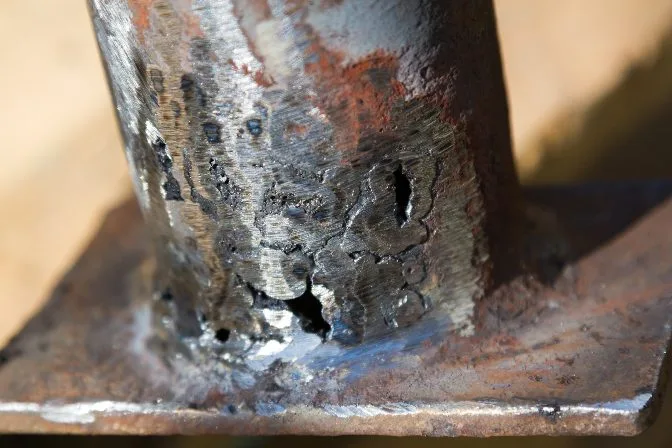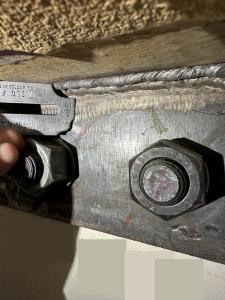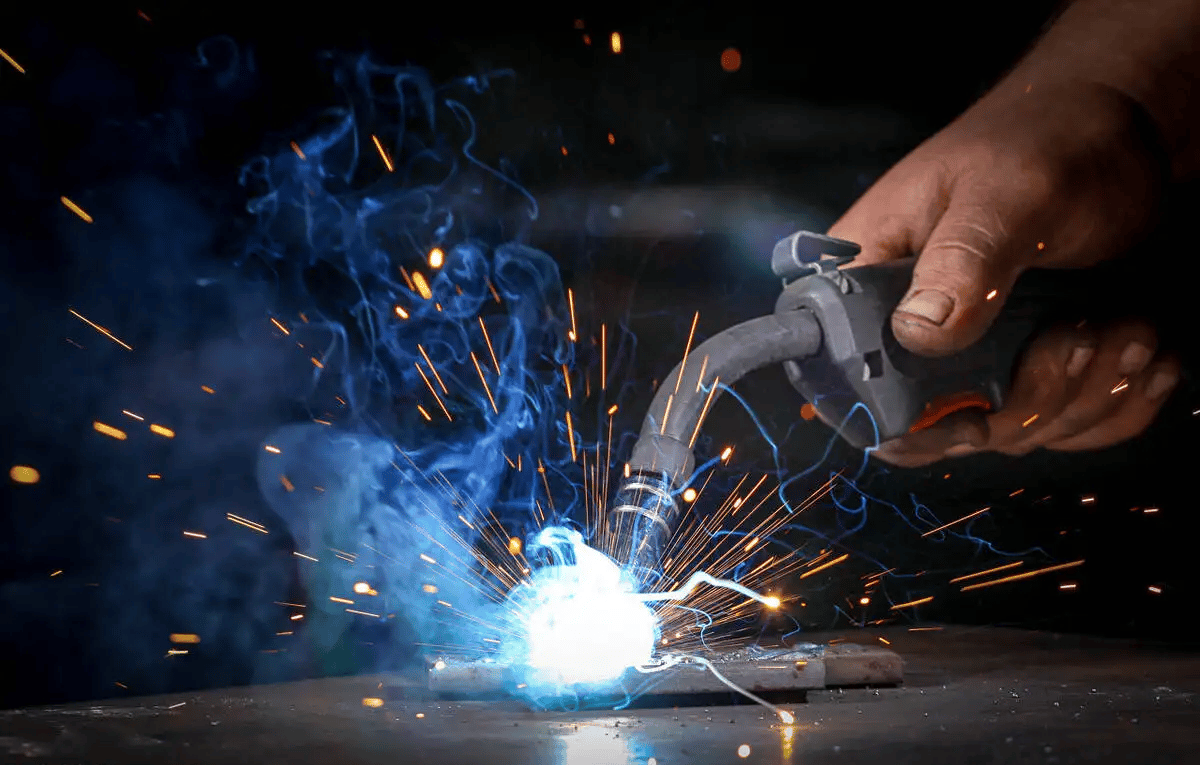Ingenious Strategies to Fillet Weld Inspection and Screening: Enhancing Weld High Quality and Conformity Specifications
In the world of welding, the quality and integrity of fillet welds play an important duty in ensuring the structural stability and integrity of various commercial components. With the consistent drive for improved performance and compliance with stringent requirements, the expedition of innovative strategies to fillet weld assessment and screening has ended up being imperative.
Advanced Non-Destructive Screening Techniques
Making use of state-of-the-art innovations, advanced non-destructive screening approaches play an important role in guaranteeing the integrity and high quality of fillet welds. These approaches, such as phased range ultrasonic testing (PAUT) and magnetic particle screening (MPT), offer detailed understandings into the weld's internal framework without triggering any type of damage to the material. PAUT, as an example, utilizes multiple ultrasonic elements to inspect the weld from various angles, supplying a detailed visualization of prospective problems like absence of combination or cracks.
Similarly, MPT works in detecting surface-breaking defects by using a magnetic area and iron fragments to the weld location. This approach is particularly useful for determining stoppages that might endanger the weld's strength. By employing these innovative non-destructive screening methods, weld examiners can precisely examine the top quality of fillet welds, ensuring compliance with industry standards and regulations. The ability to discover problems beforehand not just boosts weld top quality yet additionally stops expensive rework or failings in structural integrity, highlighting the importance of these ingenious testing techniques in welding assessments.
Robotics and Automation in Assessment
The assimilation of robotics and automation has changed the inspection process for fillet welds, enhancing effectiveness and precision in top quality analysis. Robotics supply exact control and repeatability in examining welds, ensuring consistent and reputable outcomes. Automated systems can be configured to comply with certain examination courses, making certain complete protection of welds and minimizing the threat of human mistake.
Robotic inspection systems geared up with innovative sensors can find and gauge weld features with high precision, providing comprehensive data for evaluation. These systems can recognize defects such as cracks, absence of combination, and porosity, enabling timely restorative actions to be taken. Furthermore, robotics and automation permit real-time data collection and evaluation, supplying prompt comments to drivers and promoting fast decision-making processes.
In addition, the usage of robotics and automation in fillet weld evaluation boosts general productivity by decreasing inspection times and increasing examination throughput. By improving the assessment process, makers can make sure weld quality and compliance criteria are satisfied successfully, ultimately resulting in set you back savings and improved item quality.
Using Expert System for Analysis
Synthetic knowledge plays an essential duty in enhancing the effectiveness and precision of evaluation in fillet weld inspection processes. By taking advantage of the power of AI, inspectors can improve the analysis of weld top quality and conformity standards, leading to extra reliable and specific outcomes. AI formulas can rapidly process substantial amounts of information from weld assessments, finding flaws or disparities that may be testing to understand the naked useful content eye. This advanced modern technology allows real-time tracking of weld quality, permitting for instant corrective activities to be taken if any type of issues are detected.
In addition, AI systems can pick up from past assessment information, constantly boosting their capability to identify potential flaws and deviations in fillet welds. This adaptive understanding ability enhances the total quality control procedure, lowering the probability of human error and guaranteeing that welds fulfill the required requirements. By incorporating synthetic knowledge right into fillet weld analysis, markets can attain higher degrees of efficiency, uniformity, and compliance in their assessment techniques.
Portable Devices for On-Site Evaluation
 Enhancing field assessment performance, the adoption of portable tools changes on-site assessment processes for fillet welds. These devices use adaptability and convenience, enabling inspectors to carry out comprehensive assessments in numerous areas, including remote or difficult settings. Mobile tools such as ultrasonic testing tools, magnetic particle assessment tools, and digital radiography systems give real-time data and high-resolution imaging abilities, enabling fast decision-making and prompt responses on weld quality.
Enhancing field assessment performance, the adoption of portable tools changes on-site assessment processes for fillet welds. These devices use adaptability and convenience, enabling inspectors to carry out comprehensive assessments in numerous areas, including remote or difficult settings. Mobile tools such as ultrasonic testing tools, magnetic particle assessment tools, and digital radiography systems give real-time data and high-resolution imaging abilities, enabling fast decision-making and prompt responses on weld quality.One considerable benefit of mobile devices is their capacity to improve inspection procedures, minimizing downtime and boosting overall productivity. Examiners can quickly deliver these tools to different job sites, eliminating the requirement for carrying heavy machinery or components to off-site facilities. In addition, the transportability of these devices advertises cost-effectiveness by minimizing transport expenditures and increasing examination timelines.
In addition, the usage of mobile devices for on-site assessment promotes positive high quality control procedures, as examiners can quickly identify and deal with any type of potential welding defects or discrepancies. By including these ingenious innovations into on-site assessment techniques, welding specialists can make certain conformity with sector standards and enhance weld top quality, eventually causing improved architectural honesty and safety in various welding applications.
Assimilation of Information Monitoring Equipment
Having actually maximized on-site evaluation procedures with the use of portable tools, the following stage involves the smooth combination of data administration systems to further improve effectiveness and information analysis abilities in fillet weld examination and screening. Welding Inspection Racine. By browse around these guys integrating data administration systems right into the examination procedure, organizations can improve information collection, storage space, and evaluation. This assimilation permits real-time monitoring of weld high quality, instant recognition of flaws, and punctual decision-making to fix any issues that may occur throughout the assessment procedure
The integration of data monitoring systems enables smooth interaction between different stakeholders involved in the inspection procedure, cultivating partnership and improving overall quality control steps. Inevitably, the combination of information administration systems serves to boost the requirements of fillet weld inspection and screening, making sure compliance with sector guidelines and enhancing weld quality.
Verdict
To conclude, cutting-edge techniques to fillet weld evaluation and testing have actually substantially boosted weld high quality and conformity standards. Advanced non-destructive screening approaches, robotics, automation, artificial knowledge, portable tools, and information management systems have actually transformed the method weld examinations are conducted. By using these modern technologies, sectors can guarantee that welds fulfill YOURURL.com the required high quality criteria and regulations, eventually boosting overall performance and security in welding processes.

By employing these sophisticated non-destructive screening methods, weld inspectors can properly assess the high quality of fillet welds, guaranteeing compliance with sector requirements and laws. Mobile tools such as ultrasonic testing gadgets, magnetic fragment inspection equipment, and electronic radiography systems give real-time information and high-resolution imaging abilities, allowing quick decision-making and immediate responses on weld high quality.
Having maximized on-site examination processes through the application of portable tools, the next stage includes the smooth integration of information administration systems to even more enhance performance and information analysis capabilities in fillet weld examination and screening (Welding Inspection Racine). Ultimately, the assimilation of information administration systems serves to boost the requirements of fillet weld inspection and screening, making sure compliance with sector guidelines and enhancing weld top quality
 In final thought, innovative approaches to fillet weld examination and screening have significantly enhanced weld high quality and compliance criteria.
In final thought, innovative approaches to fillet weld examination and screening have significantly enhanced weld high quality and compliance criteria.